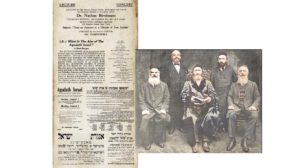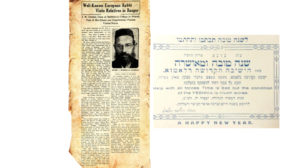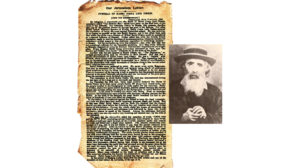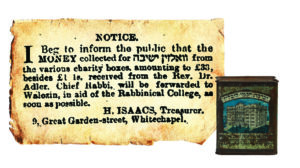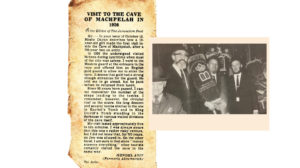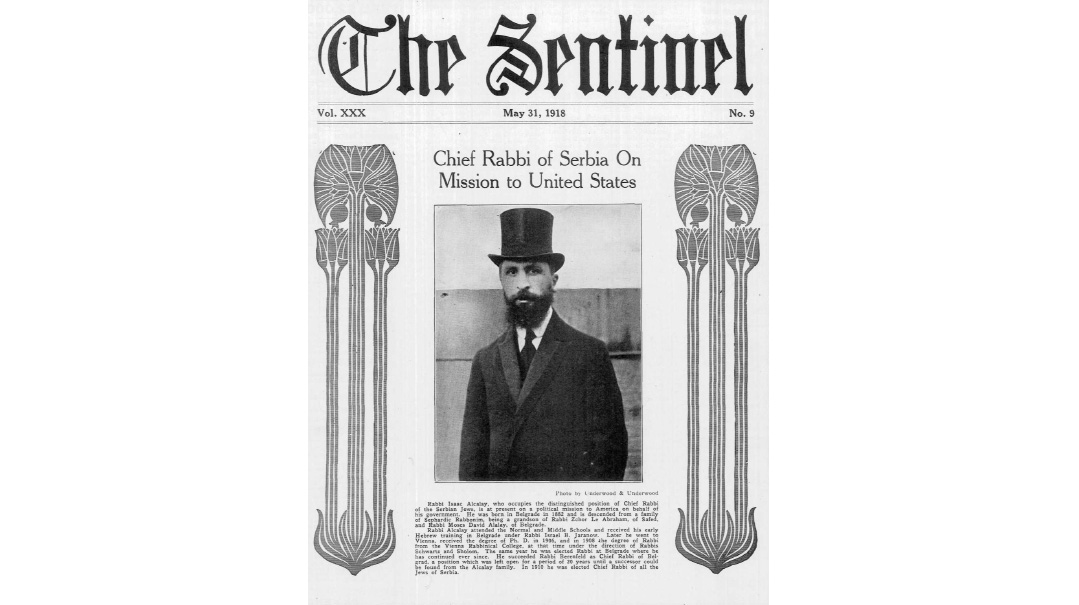A Shtikel Brisk on the Hudson
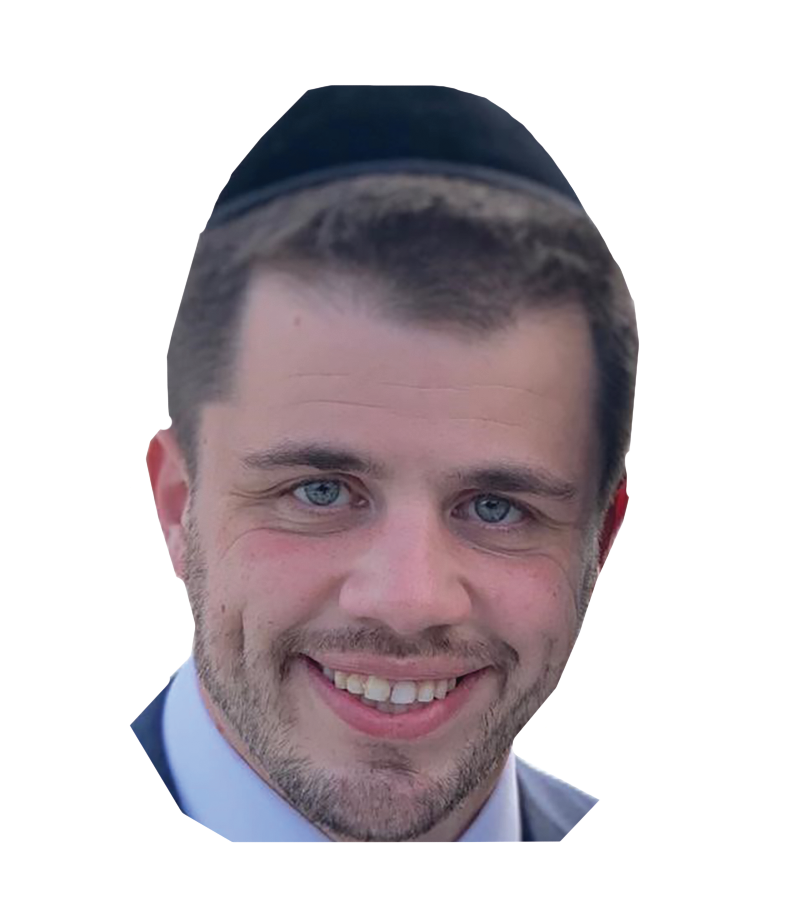
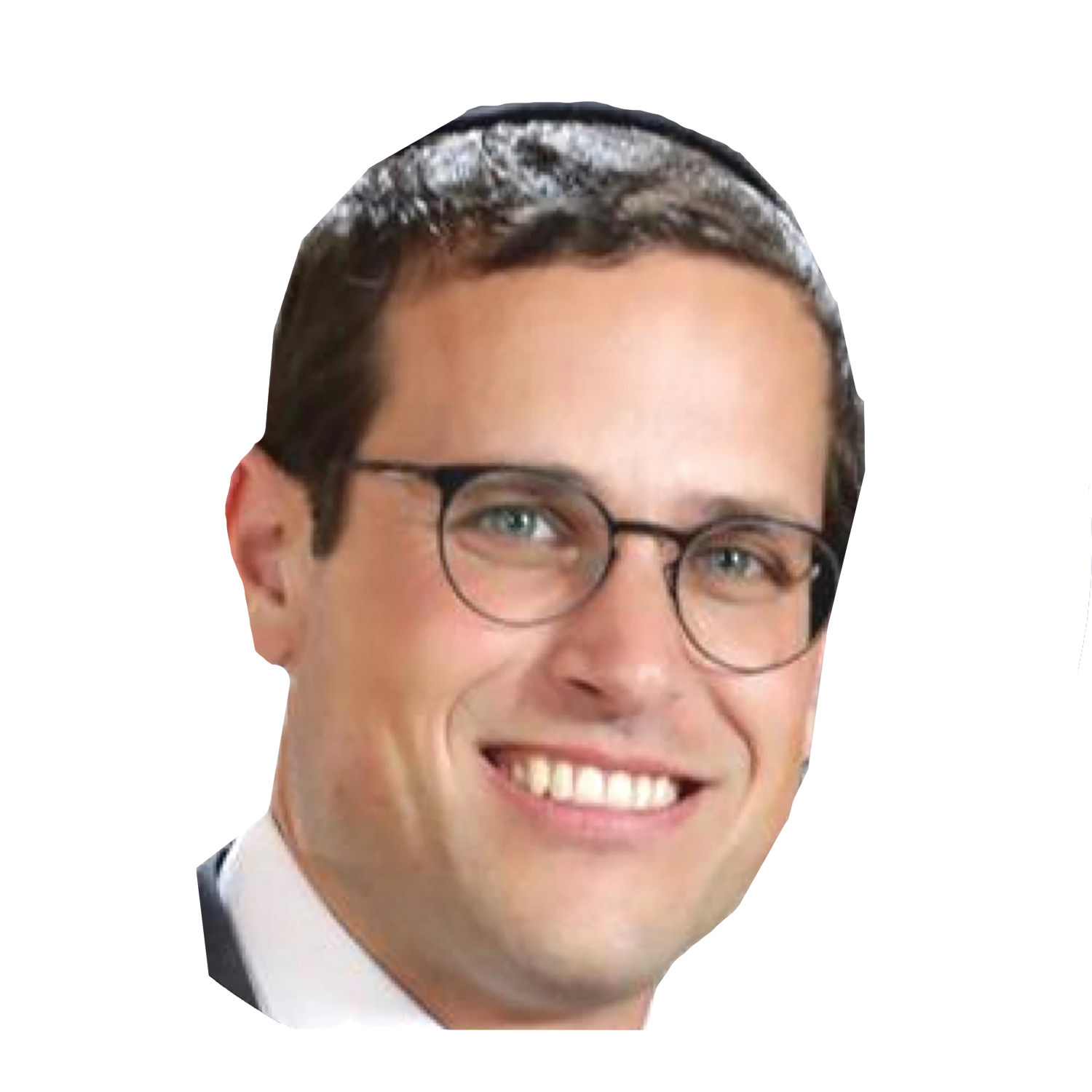
This Shabbos marks eighty years since the petirah of Rav Moshe Soloveitchik
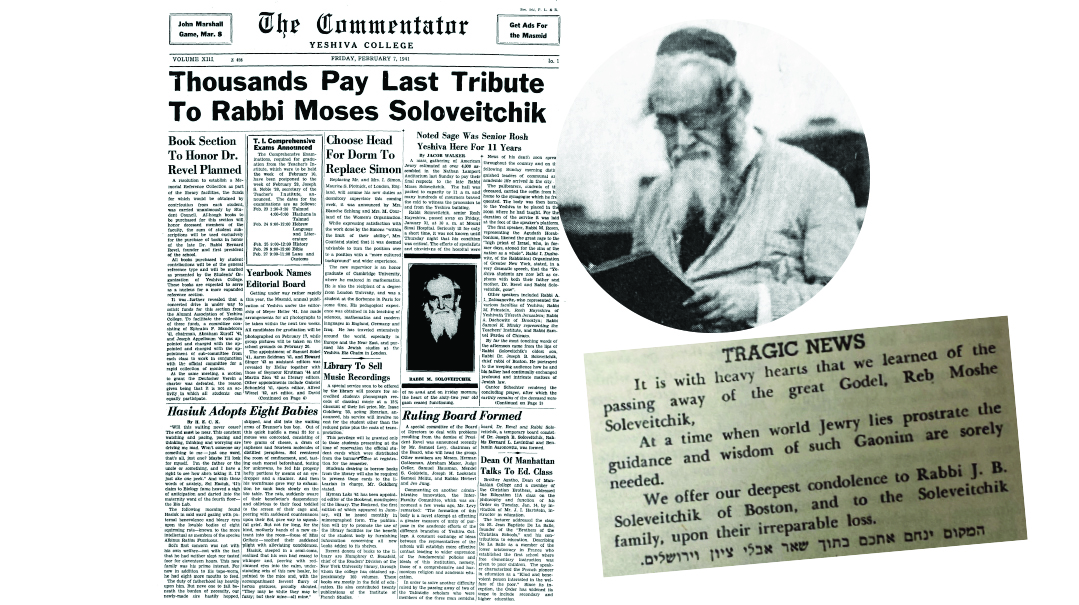
Title: A Shtickel Brisk on the Hudson
Location: New York, NY
Document: Front Page of YU Commentator and Orthodox Youth
Time: January 1941
Moshe Soloveitchik, grandson of the Netziv of Volozhin, was celebrating his bar mitzvah, and his great-grandfather rose to speak. He cited a tradition from the family patriarch Rav Chaim Volozhiner that the Torah’s final station prior to Mashiach’s arrival would be in far off America. The Netziv related that when Rav Chaim said that, he burst into tears. “Who knows the extent of the yissurim and mesiras nefesh required of courageous individuals in order to establish Torah there,” he cried.
Tragically, many of the first roshei yeshivah in the early history of the American Torah world passed away prematurely in the prime of their lives. America’s first rosh yeshivah, the Meitscheter Illui, passed away at the age of fifty in 1928, followed by Rav Dovid Leibowitz in 1941 at the age fifty- four, and Rav Shlomo Heiman, aged fifty-seven, in 1944.
This Shabbos marks eighty years since the petirah of Rav Moshe Soloveitchik.
Rav Moshe, the son of Rav Chaim Brisker, served as rosh yeshivah of RIETS from 1929 until his death at the age of 61 in January 1941. It’s almost as if Rav Chaim Volozhiner’s prophecy was tragically carried out by these great Torah leaders who gave their lives to teach Torah on these shores.
Rav Moshe was born in the town of Volozhin in 1879 where his father served as sgan rosh yeshivah. He later married Pesha Feinstein, the daughter of Rav Eliyahu “Pruzhaner” Feinstein. His children grew up watching the milchamtah shel Torah, as Rav Moshe would grapple with the most difficult sugyos with a small, elite group of talmidim in his house. They would later describe their home as “living with the Rambam.”
With his father’s assistance, Rav Moshe secured his first position in Rasiyn (Raseiniai), where he succeeded Rav Alexander Moshe Lapidos. He also led a yeshivah there, composed of talmidim who had been sent by the Alter of Slabodka, as part of the latter’s efforts to spread Torah and mussar throughout Lithuania. In 1913 he was appointed to the rabbinate of Choslovitz, a town in White Russia dominated by Chabad chassidim.
With the collapse of organized Jewish life following the Bolshevik takeover, the Soloveitchik family crossed the border into Poland, where Rav Moshe was offered a position in the newly reopened Volozhin Yeshiva under the aegis of his grandfather Rav Refael Shapiro. When that failed to materialize, he moved to Warsaw where he headed the Tachkemoni Rabbinical Seminary, whose secular department was directed by the historian Dr. Meir Balaban.
Dissatisfied with the religious standards at Tachkemoni, Rav Moshe accepted the invitation of Rabbi Dr. Bernard Revel to assume leadership of RIETS. Rigid US immigration policies delayed the move. At the US embassy in Warsaw, his application wasn’t approved due to an ingrown toenail. In the interim, Rav Shimon Shkop served as the temporary Rosh Yeshiva in RIETS until Rav Moshe’s health issue was resolved and his immigration status cleared.
Upon arriving in New York in 1929, he began delivering the highest shiur in the yeshivah. Rav Moshe’s first shiur was described by a talmid in a 1930 issue of the RIETS student publication Hedenu:
For the first shiur, the Beth Hamedrash was filled as feelings of expectancy and festivity were felt by all. Our master [Rabbi Moshe Soloveitchik] began his Shiur. Great was the surprise felt by all those present since our master’s lecture didn’t seem like a beginning. It did not appear as if this was the initial time he was speaking in our Yeshiva. It rather seemed like a continuation, as if he had constantly lectured in the Yeshiva…. In truth, it was a continuation, a continuation of the long road that the Torah has traveled: from Sura·and Pumbedisa in Babylonia, through all the countries of our exile, until it reached Volozhin. Now it is coming from Volozhin to New York.
The early years of Rav Moshe’s tenure at RIETS were difficult ones for the yeshivah. The Great Depression placed the yeshivah in a precarious financial situation, and the rebbeim were often not paid for months. Rabbi Oscar Fasman recalled visiting Rav Moshe in New York, and how he was warned in advance not to eat any of the food offered to him, lest Rav Moshe and his family be left without anything to eat for dinner that night. When the yeshivah’s rebbeim once threatened a walkout, Rav Moshe worked behind the scenes to ensure the strike was averted. H even developed a complex plan to ensure the yeshivah’s activities continued at various NY shuls, in the event that the yeshivah building faced foreclosure.
Rav Moshe became active in the Agudath Harabbanim and openly bemoaned the sad state of the rabbinate in the United States. In a speech at the 1940 YU commencement, he attacked the lack of dignity and prestige that rabbanim were treated with in the United States, and the many unworthy figures who were doing the position no favors.
Rav Moshe set out to build a new generation of Torah scholars who would bring prestige and honor to the American Torah world, and his abbreviated years at RIETS saw great success. His talmidim included Rav Chaim Zimmerman, Rav Chaim Pinchas Scheinberg, Rav Avigdor Miller, Rav Mordechai Gifter, Rav Moshe Bick, Rav Yisroel Shurin, Rav Meilich Schachter, Rabbi Sydney Kleinman, and Rabbi Bernard Lander.
At his levayah he was mourned by thousands with hespedim delivered by his son and successor, Rav Joseph Ber Soloveitchik, and two other iconic “Rav Moshes” who were among the country’s greats: Rav Moshe Rosen, author of the Nezer Hakodesh and leader of the Agudath Harabbonim, and Rav Moshe Feinstein, his cousin, who had arrived in the country a few years earlier and was already known as a Torah giant. Rav Moshe is buried in the Mt. Judah Cemetery in Queens alongside many of the country’s Torah giants.
An eye for greatness:
When Rav Moshe traveled (alone) to assume his position in NY, he retained a 23-year-old Slabodka talmid from Warsaw named Yitzchok Hutner to tutor his son Aharon, commencing what would be a life-long relationship. Several years later when Rav Hutner arrived in the United States, Rav Moshe returned the favor, assisting in arranging his first position at RJJ and recommending him to Mesivta Chaim Berlin. The rest, as they say, is history.
Did you know:
As arguably the closest talmid of Rav Chaim Brisker, Rav Boruch Ber Leibowitz enjoyed a close relationship with his rebbi’s children as well. During a tense rabbinical dispute among the Agudas Harabbonim of Poland during the 1920s someone made a disparaging comment towards Rav Moshe. Rav Baruch Ber responded strongly, ensuring that everyone treated Rav Moshe with proper respect.
It was on Rav Baruch Ber’s fundraising trip to the United States that he recommended Rav Moshe as rosh yeshivah of RIETS, following the passing of the Meitscheter Ilui, its previous rosh yeshivah.
Another brother:
Though Rav Moshe was older than his younger brother Rav Velvele, the Brisker Rav, he still wasn’t the oldest son of Rav Chaim. As the bechor, Rav Yisroel Gershon Soloveitchik was old enough to have merited serving his grandfather, the Bais Halevi. He settled down in Brisk, where he and almost his entire family were later murdered by the Nazis. His sole surviving son, Rav Moshe Soloveitchik (1915–1995), gained renown as a rosh yeshivah in Switzerland and an influential leader for post-war European Jewry.
(Originally featured in Mishpacha, Issue 844)
Oops! We could not locate your form.
